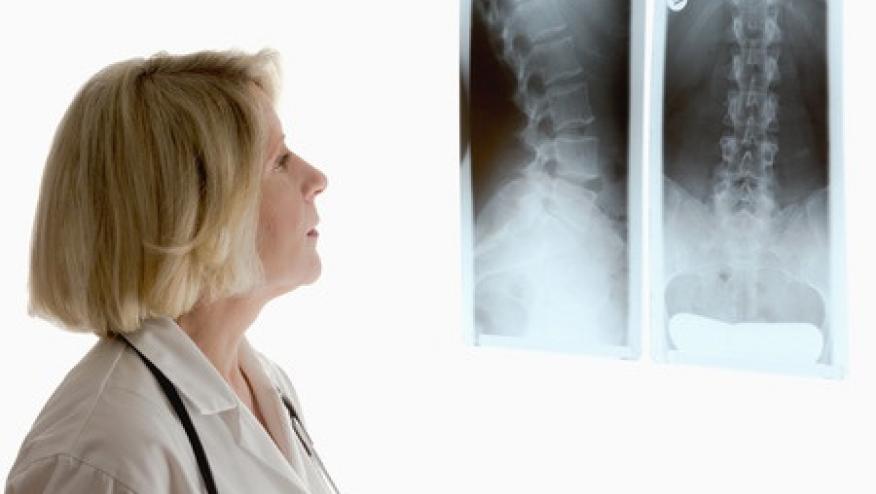Agressive Early Treatment Prevents Rapid Bone Loss in Rheumatoid Arthritis Save

The International Osteoporosis Foundation (IOF) Chronic Inflammation and Bone Structure (CIBS) Working Group has published its review of bone loss in rheumatoid arthritis (RA) and the role of biologic therapies on bone outcomes - bone mineral density (BMD), bone turnover markers, and fragility fractures. They have concluded that early and aggressive treatment with biologic disease-modifying anti-rheumatic drugs (bDMARDs) is crucial to avoiding progressive bone loss in patients with RA.
Using Using the PICOST methodology, the authors performed a sytematic literature review identifying 248 abstracts between 2003 - 2015. The final selection included only 28 studies,
Their findings concluded that biologic treatment was associated with the decrease in bone loss. Studies with anti-TNF blocking agents show preservation or increase in spine and hip BMD and also a better profile of bone markers. Most of these studies were performed with infliximab. Only three epidemiological studies analyzed the effect on fractures after anti-TNF blocking agent’s treatment. IL-6 blocking agents also showed improvement in localized bone loss not seen with anti-TNF agents. There are a few studies with rituximab and abatacept.
In addition to inflammation, there are numerous factors that contribute to bone loss. Anorexia, malnutrition, muscle wasting, cachexia, depression, decreased functional capacity and lack of exercise associated with joint pain, bone damage and progressive bone loss.
Most importantly, the use of corticosteroids during RA treatment, even a small dose of prednisone of 5mg/day or equivalent for more than 3 months, is associated with rapid and persistent loss of bone. One study has shown that continuous treatment with prednisone at 10 mg/day during 90 days or more increased the risk of vertebral fractures 17-fold and hip fractures 7-fold.
The Working Group concluded that:
- Early and "aggressive" treatments were more effective in rapidly achieving a low level of inflammation and halting the progressive loss of bone.
- Therapies targeting specific cytokines and its signaling pathways with biologic DMARDs may protect the skeleton and should be introduced as soon as possible. However, it should be noted that outcomes in these clinical studies were based mostly on changes in biological markers and only a few reported modifications on BMD or localized osteoporosis. Only three retrospective studies reported reduction in fracture risk after anti-TNF therapy.
- The TNF blockade studies showed that, even in RA patients not responsive to treatment, a protective effect on bone was observed suggesting the possibility that anti-TNF therapy may restore coupling of the bone remodeling independently of its anti-inflammatory action.
- Lack of efficacy of TNF blockade on hand bone loss was found, despite its preservation of BMD in lumbar spine and hip. Better results regarding localized bone loss were observed with anti-IL6 treatment.
- Very few studies reported inhibition of bone loss after rituximab and abatacept treatment.
- Anti-RANKL therapy showed beneficial effects in the preservation of bone mass in RA, especially in juxta-articular osteoporosis, although this treatment cannot alter the inflammatory process.
- New non-biologic therapies but potent inhibitors of the cytokine network may offer future options for skeleton preservation in RA.
Although several studies reported favorable actions of biologic therapies on bone protection, there are still unmet needs for studies regarding their actions on the risk of bone fractures.










If you are a health practitioner, you may Login/Register to comment.
Due to the nature of these comment forums, only health practitioners are allowed to comment at this time.